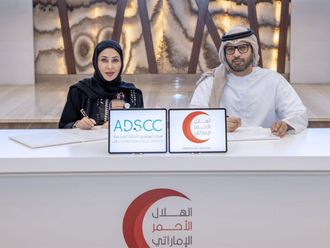
Abu Dhabi: A whopping 38.7 million adults aged 20 to 79 years in the Middle East and North Africa region are currently diabetic, and this number is expected to increase by 111 per cent by 2045, a leading diabetes report has revealed.
This means that 82 million people could become diabetic over the next three decades, according to the International Diabetes Federation (IDF) Atlas 2017, which was discussed in the capital at the IDF Congress 2017 on Tuesday.
The chronic condition is known to affect 17.3 per cent of the UAE’s adult population, but for every known diabetic, there is at least one more diabetic who remains undiagnosed, said Dr Nabil Sulaiman, a top researcher and head of Family and Community Medicine and Behavioural Sciences at the University of Sharjah.
A recent cross-sectional study at the University of Sharjah, entitled the ‘UAE Diabetes and Lifestyle Survey’, has also found that Emiratis are also most at risk of developing the lifestyle disease, followed by Asians, he said.
“Our five-year study of 4,200 adults has shown that 21.3 per cent of Emiratis are diabetic, as well as 19.1 per cent of expatriates. And although this study did not use data from Abu Dhabi residents and Emiratis in Dubai, studies covering these two emirates show that the figures are similar there as well,” Dr Sulaiman told Gulf News.
“It is true that diabetes prevalence in the UAE has not changed significantly over the last few years. But this could transform as the population ages, as age is a major risk factor for the disease,” he added.
Dr Sulaiman was speaking on the sidelines of the IDF Congress 2017, a four-day event in the capital that has gathered leading medical professionals, government officials and pharmaceutical executives to discuss the challenges in prevention, diagnosing and treating diabetes. The IDF is a Brussels-based global alliance of diabetes associations from 160 countries, and nearly 10,000 participants are expected to attend the Congress by the time it wraps up on Friday.
The congress itself is a biennial event, and its opening in the capital was attended on Monday night by Lt-General Shaikh Saif Bin Zayed Al Nahyan, Deputy Prime Minister and Minister of Interior, Shaikh Abdullah Al Hamed, chairman of the Abu Dhabi Department of Health, and other dignitaries.
- Dr Nabil Sulaiman | Leading researcher
Diabetes is a chronic condition that occurs when there are raised levels of glucose in the blood because the body cannot use insulin effectively, or produce enough of the blood sugar-regulating hormone insulin. Nearly 90 per cent of all diabetes cases are Type 2 diabetes, a lifestyle disease for which the risk is elevated by poor diet and limited physical activity.
Last month, the IDF released its 2017 Atlas, an authoritative resource that focuses on the global burden of diabetes and its complications. According to the report, diabetes is now a global epidemic that ranks among the top 10 causes of mortality worldwide, leading to five million deaths every year.
The UAE currently ranks third in the Middle East and North African terms of diabetes prevalence, just behind 17.7 per cent in Saudi Arabia and 17.3 per cent in Egypt. In terms of ethnicities, Emiratis had the highest prevalence at 21.3 per cent, followed 16.4 per cent prevalence among Asians, 15.2 per cent among non-Emirati Arabs, and 11.9 per cent among Western and African expats.
Dr Sulaiman, who was principal researcher of the study, said that top risk factors for diabetes among UAE residents are age, family history, high body-mass index, high level of triglycerides and a propensity for snoring. Low levels of physical activity, hypertension and smoking are other risk factors for the chronic condition.
“For expats, we used data from visa screenings for individuals who had lived in the country for more than four years. They were randomly selected by the National Bureau of Statistics, which also picked out Emirati households for door-to-door surveys,” Dr Sulaiman explained, adding that the results are therefore representative of the UAE population.
“During the next phase of analysis, we will look into molecular details and sequence the genes to determine what genetic factors affect the risk of developing diabetes. If this leads to breakthroughs, we can better tailor treatment for patients,” he added.
He also urged residents to eat healthy and live physically active lives, warning that obesity more than doubles an individual’s risk of developing diabetes.
“It will not be easy to reduce diabetes prevalence, but Finland has managed to do it by creating widespread awareness and engaging all segments of the community. The UAE leadership aims to reduce the prevalence to 16.2 per cent by 2021, and to achieve it, multiple sectors must be involved,” he said.












